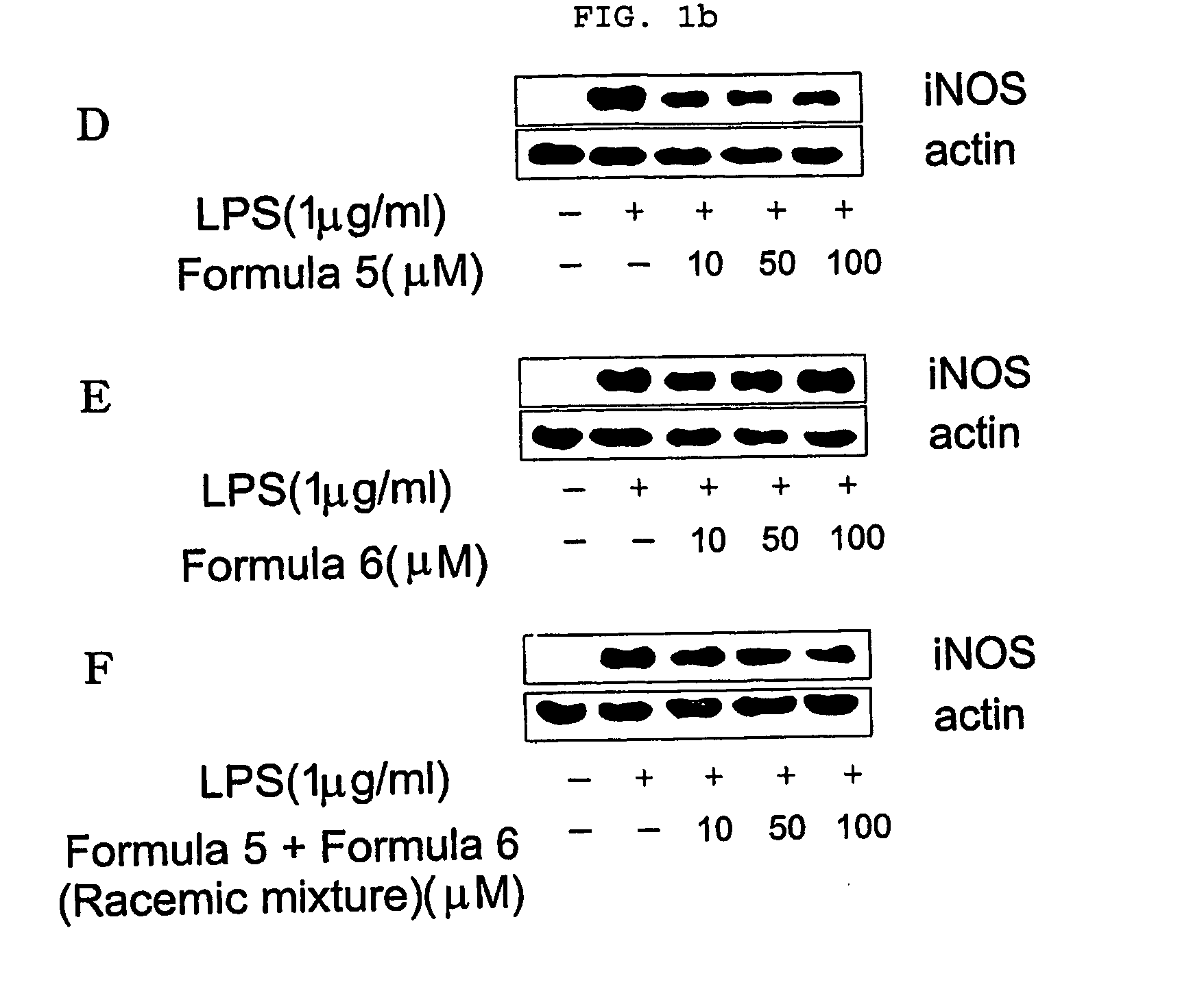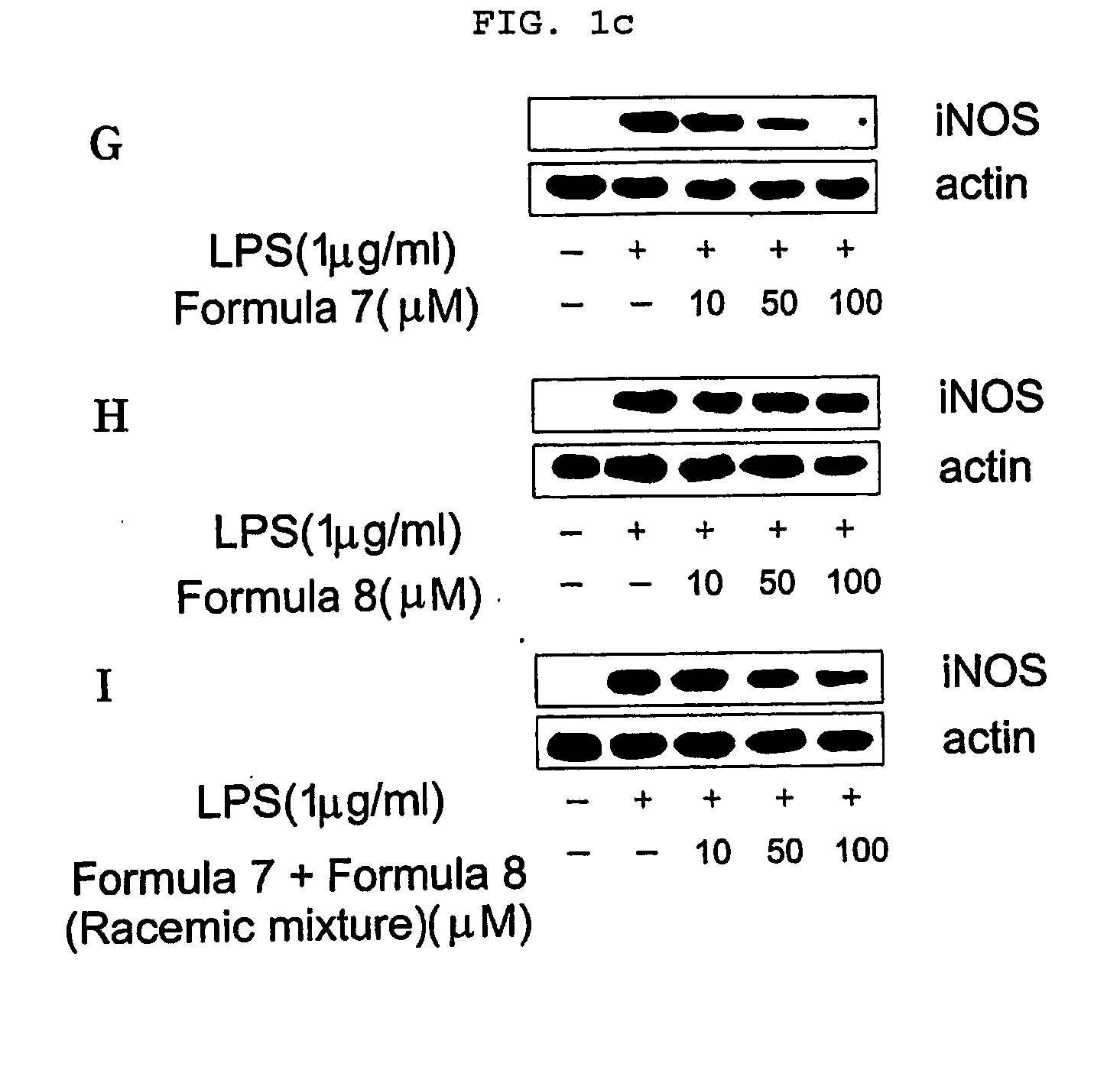Novel enantiomers of etrahydroisoquinoline derivatives and theirpharmaceutically acceptable salts, their preparations and pharmaceutical compositions
a technology of etrahydroisoquinoline and enantiomers, which is applied in the direction of drug compositions, biocide, extracellular fluid disorder, etc., can solve the problems of shortening the duration or slightness of the pharmaceutical effect, limiting the use of higenamine, and disadvantages of higenamin
- Summary
- Abstract
- Description
- Claims
- Application Information
AI Technical Summary
Benefits of technology
Problems solved by technology
Method used
Image
Examples
preparation example 1
Synthesis of Di-μ-chloro-bis[(η6-p-cymene)chlororuthenium (II)
[0175]
[0176] In a flask, RuCl3H2O (514 mg, 1.97 mmol) was dissolved in ethanol (25 ml), to which α-phellandrene (3.51 mL, 21.6 mmol) was added dropwise. Then, the flask, equipped with a reflux condenser, was filled with nitrogen gas. Using a thermostat, the reaction solution was adjusted to 79° C. in temperature, and then refluxed for 4 hours. The reaction mixture was cooled to room temperature. After that, the precipitated solid was filtered through a Buchner funnel. Thus obtained brown solid was washed once with methanol (40 ml), followed by removing the solvent under reduced pressure. The brown solid (340 mg) was recrystallized from methanol (3 mL), to give the desired compound, Di-μ-chloro-bis[(η6-p-cymene)chlororuthenium (II) (211 mg, 35%) as a brown solid.
[0177]1H-NMR(300 MHz, DMSO-d6): ε5.77(q,4H), 2.8(m,1H), 2.1(s,3H), 1.2(d,6H)<
preparation example 2
Synthesis of RuCl[TsDPEN](p-cymene) Catalyst
[0178]
[0179] In a flask, Di-μ-chloro-bis[(η6-p_cymene)chlororuthenium (II) (211 mg, 345 μmol) was dissolved in 2-propanol (10 mL), to which triethylamine (TEA) (0.192 mL, 1.38 mmol) was added and then (1S,2S)-(p-toluenesulfonyl)-1,2-diphenylethylenediamine (253 mg, 689 μmol) was added dropwise. Then, the flask, equipped with a reflux condenser, was filled with nitrogen gas. Using a thermostat, the reaction solution was adjusted to 80° C. in temperature and refluxed for 1.5 hours. Completion of the reaction was detected by thin film chromatography. The reaction mixture was cooled to room temperature, and vacuum concentrated, to give a very viscous liquid residue. Such residue was dissolved in methanol (1 ml) with mild heating, and allowed to stand for one day and night. A scarlet solid was precipitated, and only deep brown supernatant was discarded. The residual precipitate as a scarlet solid was washed once with ethanol (1 mL). The solven...
example 1
Synthesis of (R)-6,7-dihydroxy-1-(p-hydroxyphenylmethyl)-1,2,3,4-tetrahydroisoquinoline hydrobromide salt
(step 1):Synthesis of N-(3,4-Dimethoxyphenethyl)(p-methoxyphenyl)acetamide
[0181]
[0182] To p-methoxyphenyl acetic acid (50.4 g, 0.303 mol) in a 50 ml round-bottom flask, 3,4-dimethoxyphenethylamine (51.2 mL, 0.303 mol) was added dropwise. Then, the flask, equipped with a septum, was charged with nitrogen gas. Using the thermostat, the reaction solution was adjusted to the temperature of 198-200° C. and heated for 4 hours. Completion of the reaction was detected by thin film chromatography. The reaction mixture was cooled to the room temperature, and chloroform (500 mL) was added thereto to dissolve the produced precipitate. The chloroform solution was successively washed with 1 N HCl, 1 N NaHCO3 and saturated brine, dried over anhydrous magnesium sulfate and filtered with a glass filter. The filtrate was vacuum concentrated to give a yellowish solid, which was then dissolved in ...
PUM
| Property | Measurement | Unit |
|---|---|---|
| prothrombin time | aaaaa | aaaaa |
| temperature | aaaaa | aaaaa |
| temperature | aaaaa | aaaaa |
Abstract
Description
Claims
Application Information
 Login to View More
Login to View More - R&D
- Intellectual Property
- Life Sciences
- Materials
- Tech Scout
- Unparalleled Data Quality
- Higher Quality Content
- 60% Fewer Hallucinations
Browse by: Latest US Patents, China's latest patents, Technical Efficacy Thesaurus, Application Domain, Technology Topic, Popular Technical Reports.
© 2025 PatSnap. All rights reserved.Legal|Privacy policy|Modern Slavery Act Transparency Statement|Sitemap|About US| Contact US: help@patsnap.com



